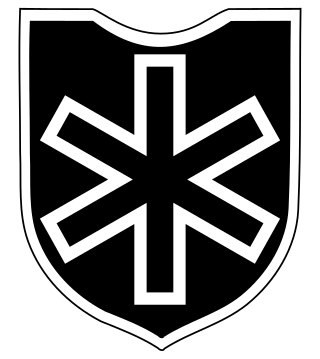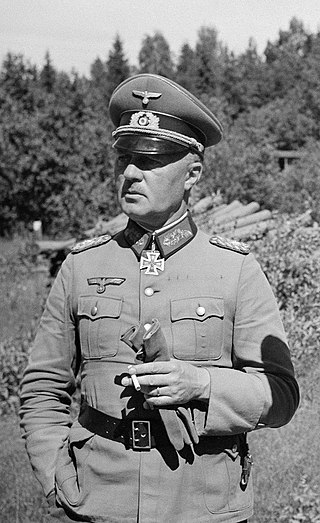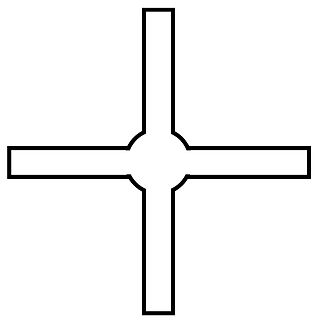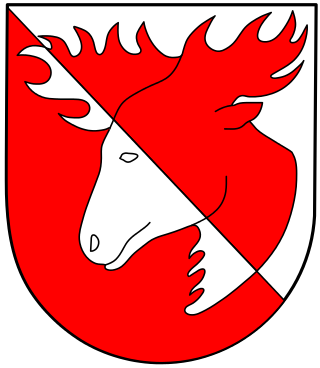
The 6th SS Mountain Division Nord was a World War II mountain infantry division of the Waffen-SS, the military wing of the German Nazi Party, primarily consisting of ethnic Germans along with some Norwegian and Swiss volunteers. It was the only Waffen-SS division to operate in the Arctic Circle.
The XXXVI Corps was a German military formation in World War II.

The matter of German troop transfer through Finland and Sweden during World War II was one of the more controversial aspects of modern Nordic history beside Finland's co-belligerence with Nazi Germany in the Continuation War, and the export of Swedish iron ore during World War II.

The 218th Infantry Division (218.Infanterie-Division) was an infantry division of the German Army that served in World War II.

The 60th Infantry Division was formed in late 1939, from Gruppe Eberhardt, a collection of SA units that had been engaged in the capture of Danzig during the Invasion of Poland. This division was unusual in that its manpower was largely drawn from the SA and the police.

The 210th Coastal Defence Division was created from a Division zbV staff in July 1942, and shipped north to defend the port Petsamo in Arctic Finland. In late 1944 it moved westward to take up the defense of Vardø in the Norwegian Finnmark.

The 61st Infantry Division was a combat division of the German Army during the Second World War. Towards the end of the war, it became the 61st Volksgrenadier Division.

The 69th Infantry Division was a combat division of the German Wehrmacht during the Second World War.

Erwin Engelbrecht was a German military officer.

The 14th Infantry Division was a formation of the Germany Army (Wehrmacht) which fought during World War II.

The 56th Infantry Division was a German infantry division which fought during World War II.

The 216th Infantry Division was a German Army division that was created during the Second World War; it was active from 1939–1943. It served on the Western Front in 1940 and later took part in the Eastern Front campaign, being involved in the disastrous Battle of Kursk.

The German 8th Infantry Division was formed in Oppeln on 1 October 1934 under the cover name Artillerieführer III which was used until 15 October 1935. It was mobilized in August 1939 and took part in the Invasion of Poland, the Battle of France and Operation Barbarossa, the invasion of the Soviet Union. On 1 December 1941, it was reorganized and redesignated 8th Light Infantry Division. It was again redesignated on 30 June 1942 as the 8th Jäger Division. It surrendered to the Red Army in Moravia in May 1945.
Army Norway was a German army operating in Norway and Finland during World War II. It was one of the two army echelon headquarters controlling German troops in the far north. Army Norway was directly subordinate to OKH, the high command headquarters of the Wehrmacht. It was created from Army Group XXI in December 1940, itself a successor of the XXI Army Corps, and disbanded in December 1944, with its tasks and assets taken over by the 20th Mountain Army.

The 30th Infantry Division of the Wehrmacht was created on 1 October 1936 in Lübeck and mobilized on 26 August 1939 for the upcoming invasion of Poland. At that time, it consisted of the usual German infantry division elements: three infantry regiments of three battalions each, one three-battalion regiment of light artillery, one battalion of heavy artillery, a panzerjager (anti-tank) battalion, an aufklärungs (reconnaissance) battalion, a signals battalion, a pioneer (engineer) battalion, and divisional supply, medical, and administrative units.

The 11th Infantry Division was an infantry division of the Wehrmacht that was initially founded as a cover formation during the Reichswehr era. It was active from 1934 to 1945.

The 50th Infantry Division was a German army division in World War II. It was formed on 26 August 1939 from the Grenzkommandantur Küstrin.
The Midsummer crisis was a political crisis in Sweden after the beginning of Operation Barbarossa on 22 June 1941. Sweden's neutrality was tested when Nazi Germany and Finland demanded that Sweden allow the transit of the Wehrmacht's 163rd Infantry Division by railroad from Norway to Finland. After the 1939 German-Soviet invasion of Poland, Swedish prime minister Per Albin Hansson declared strict neutrality and called for the formation of a coalition government involving all major parties under his leadership; this was realized in December, with the exception of the Communist Party. With Spain, Portugal, Switzerland, Liechtenstein, Ireland and the Vatican, Sweden maintained neutrality throughout World War II and cooperated with both sides. According to Winston Churchill, during the war Sweden ignored the greater moral issues and played both sides for profit.
The 454th Security Division was a rear-security division in the Wehrmacht of Nazi Germany. The unit was deployed in German-occupied areas of the Soviet Union, in the Army Group South Rear Area.
The 199th Infantry Division was an infantry division of the German Heer during World War II.















